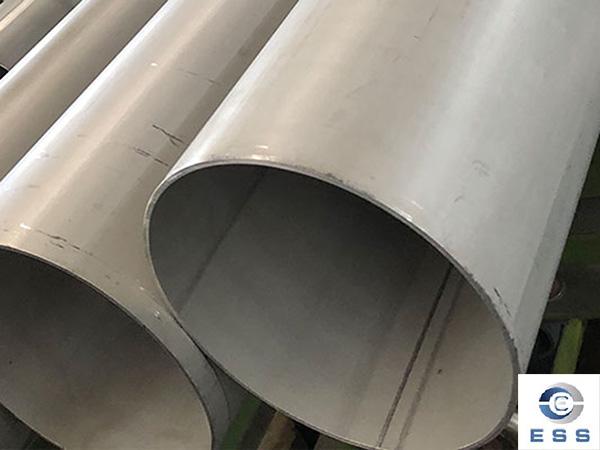Advantages of
welded pipes as oil and gas pipelines
The straight seam welded pipe is a circular straight seam welded pipe manufactured by a steel strip or steel plate from a steel mill through a press or a coiler, and then welded by secondary welding or submerged arc welding. The straight seam produced by this method Welded pipes can be called straight seam welded pipes. Compared with seamless steel pipes, longitudinal welded pipes have lower cost, higher production efficiency, and a wider range of machinable sizes and thicknesses. The blanks used are mainly steel plates. Longitudinal welded pipes have strong Corrosion resistance in acidic environments.
From the perspective of being suitable for offshore oil and gas transportation, it is necessary to build longitudinal welded pipes. At present, a considerable part of oil and gas resources in the world are buried in the ocean. From the perspective of future natural gas development, they are mainly buried in the ocean in the form of "combustible ice". It is currently recognized that the total energy of "combustible ice" is 2-3 times that of all coal, oil, and gas, and it is the same in China, and it will be the main energy source in the future.

With the development of oil exploration to the depths of the ocean, the submarine pipeline is crushed under the joint action of pressure, impact and bending force, which is the weak link of the spiral welded pipe. In order to improve the transportation capacity of the pipeline and make the submarine pipeline develop in the direction of thick wall, the submarine pipeline mostly adopts the straight seam welded pipe.
Coal slurry and ore slurry pipelines are required to use straight seam welded pipes. The pipeline conveys "paste" coal and mineral powder in the upward direction. Since the weld reinforcement in the spiral welded pipe is a spiral line, the resistance to the coal slurry is large, and the pipeline needs a larger wall thickness, so the straight seam welded pipe is preferred. .
Pipelines are critical to the successful operation of oil and gas pipelines. Piping used in these systems must be durable and reliable, able to withstand extreme temperatures and pressures, as well as environmental elements such as corrosion and harsh chemicals. Longitudinally welded pipe (LWP) offers significant advantages over other types of pipe used for oil and gas pipelines.
Durability of Longitudinal Welded Pipes
One of the main advantages of LSW pipes is their durability. Longitudinal welded pipe is manufactured by welding together a series of end-to-end connected segments. This joining process makes the pipes more resistant to pressure, corrosion and temperature stresses than conventional pipes. LSW pipe also has a smooth inner wall and is resistant to corrosion, making it ideal for transporting oil and gas. Additionally, LSW pipe is usually made from higher quality steel than standard pipe, making it more durable.
Flexibility of Longitudinal Welded Pipes
Another advantage of LSW pipes is their flexibility. LSW pipes can be bent, allowing them to maneuver around obstacles in the route, such as trees or rocks. This flexibility makes the pipes easier to install as they can be bent to fit in the most convenient way. The flexibility of LSW pipes also makes them ideal for piping through difficult terrain. In addition, individual pipe segments can be moved and adjusted to accommodate changes in pipeline routing or elevation, which helps reduce construction time and costs.
Cost-Effectiveness of Longitudinal Welded Pipes
The cost-effectiveness of LSW pipe is another major advantage. Longitudinally welded pipe is generally less expensive than other types of pipe because they have fewer components and are simpler to assemble. Additionally, LSW pipes require less maintenance than other types of pipes because they are more resistant to corrosion and wear. Therefore, longitudinally welded pipes can provide significant cost savings in the long run.
Conclusion
Longitudinally welded pipe offers several advantages for oil and gas pipelines, including durability, flexibility and cost-effectiveness. Longitudinally welded pipe is strong and corrosion-resistant, can be bent to accommodate obstacles, and is less expensive to produce, maintain, and install than other types of pipe. For these reasons, longitudinally welded pipe is increasingly used in oil and gas pipelines and should continue to be a popular choice in the future.
Read more :Comparison of classification methods for seamless and welded pipes













 Eastern Steel Manufacturing Co.,Ltd not only improve product production and sales services, but also provide additional value-added services. As long as you need, we can complete your specific needs together.
Eastern Steel Manufacturing Co.,Ltd not only improve product production and sales services, but also provide additional value-added services. As long as you need, we can complete your specific needs together.










